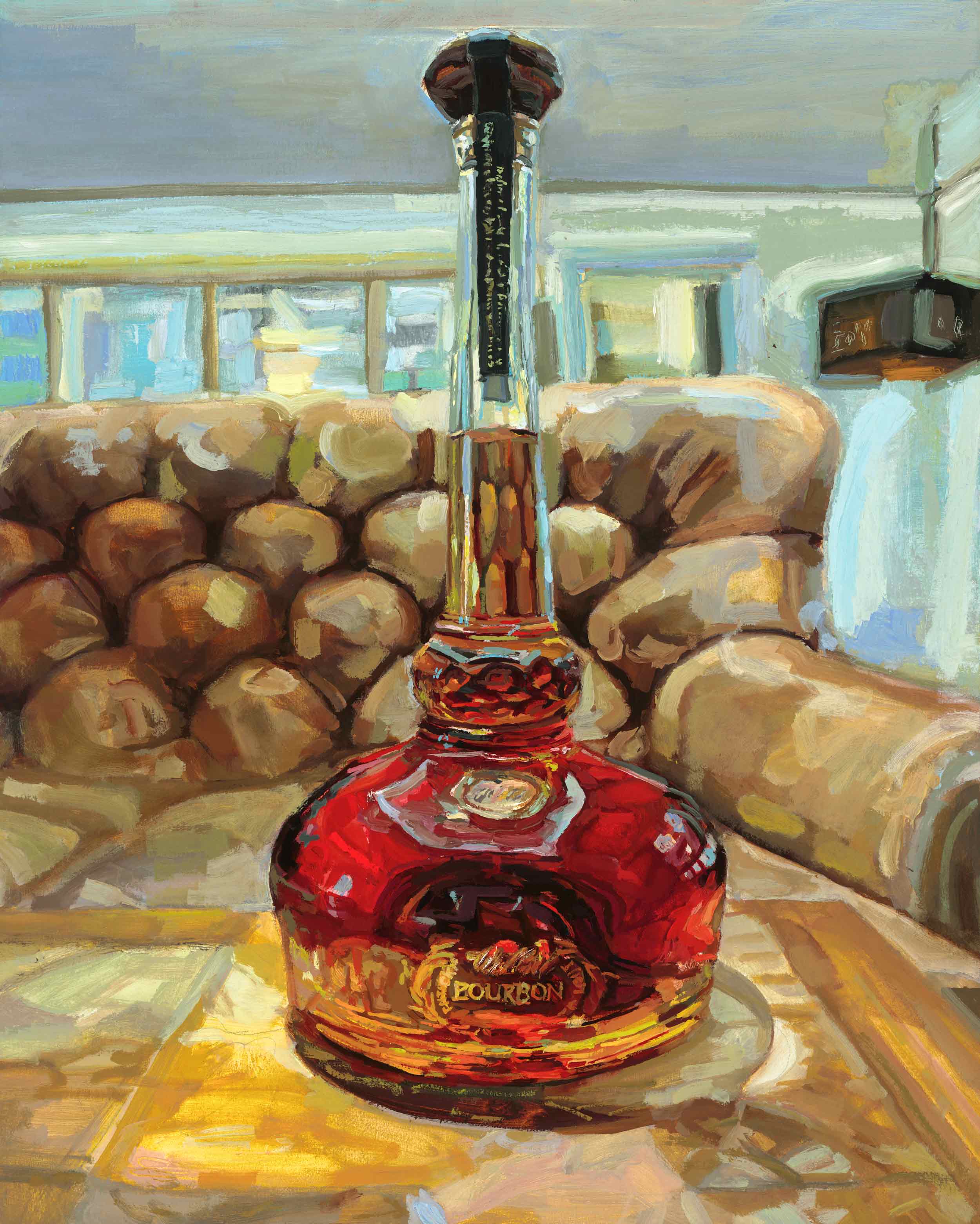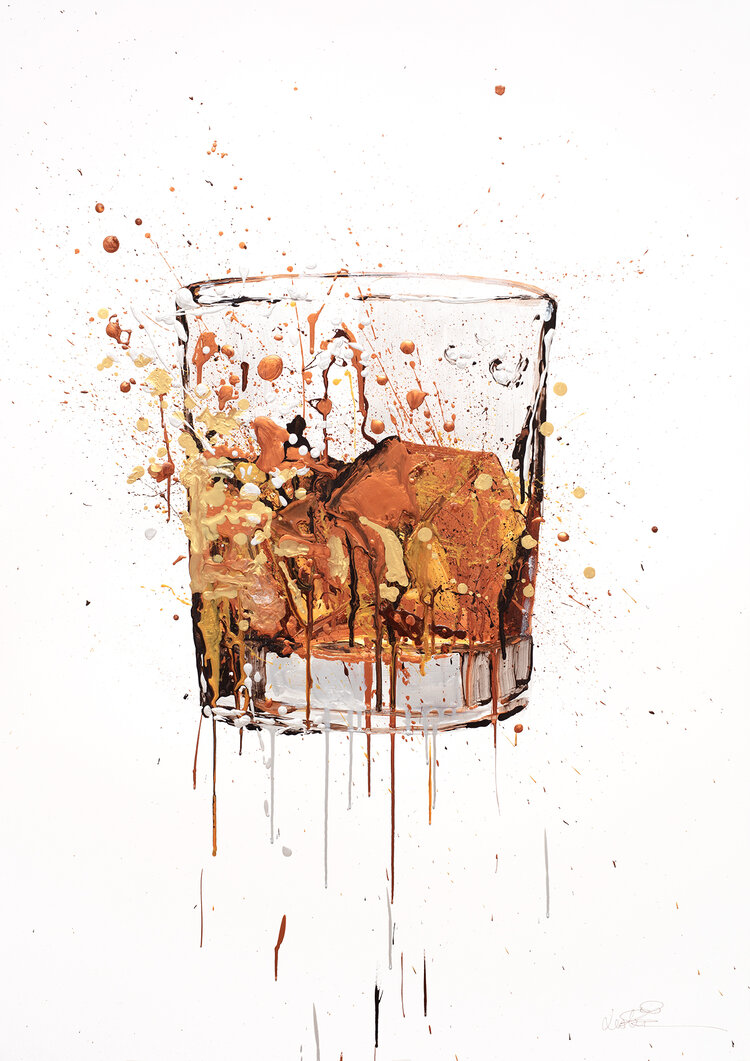Whiskey Art as a Declaration: How It Improves Home Decoration
Whiskey Art as a Declaration: How It Improves Home Decoration
Blog Article
The Relevance of Whiskey Art in Celebrating Heritage and Workmanship in the Beverage Industry
The elaborate connection in between bourbon art and the party of heritage and craftsmanship within the beverage industry can not be overstated. With thoughtfully made labels and containers, bourbon brand names envelop their historical origins and the artisanal abilities that define their production techniques.
The Historical Roots of Whiskey
At the heart of bourbon's appeal lies an abundant tapestry of historic roots that map back to old people. The origins of whiskey can be linked to the purification techniques of the Sumerians and Babylonians around 2000 BCE, where early types of fermented grain beverages started to emerge. Nevertheless, it remained in the Middle Ages that the art of purification evolved substantially, particularly in Ireland and Scotland, resulting in the creation of scotch as we understand it today.
The term "whiskey" itself acquires from the Gaelic word "uisce beatha," implying "water of life." This expression underscores the cultural value of whiskey in Celtic cultures, where it was commonly connected with rituals, parties, and common bonding. By the 15th century, purification came to be a recognized craft within reclusive communities, leading the way for the establishment of legal distilleries.
As profession courses broadened, scotch's popularity expanded, transcending local limits and catching the interest of lovers worldwide. Realism Art. This historic trip reflects not only the workmanship behind bourbon production but additionally its indispensable function in social and cultural contexts, noting it as a significant drink throughout background
Artistic Expression in Branding
Whiskey branding stands as an engaging junction of artistry and commerce, where visual identity plays an important role in forming consumer perception. The visual appeals of bourbon tags, product packaging, and marketing materials reflect not only the brand's story but also its core values and heritage. With creative expression, distilleries communicate a story that reverberates with customers, evoking feelings and stimulating links.
Using shade, typography, and imagery in branding serves to distinguish items in a saturated market. As an example, conventional concepts may evoke a sense of credibility and workmanship, while contemporary styles can represent innovation and forward-thinking. This critical imaginative instructions enhances brand name recognition and commitment, permitting consumers to create a personal relationship with the whiskey they select.
Furthermore, creative expression in branding frequently functions as an event of local heritage. Distilleries regularly integrate regional symbols or historic recommendations into their layouts, producing a sense of location that invites consumers to take part in a wider cultural experience. Inevitably, the creativity behind whiskey branding not just boosts aesthetic allure but also enriches the total story of the brand, promoting a deeper gratitude for the workmanship and heritage ingrained in each container.
Craftsmanship in Container Style
The artistry evident in scotch branding extends beyond aesthetic identification to include the workmanship included in container style. Each bottle works as a vessel not simply for the spirit within, yet likewise for the tale it informs concerning its custom, high quality, and origin. The design procedure requires thorough interest to information, as elements such as product, closure, and shape contribute dramatically to the overall assumption of the bourbon.
Workmanship in container layout includes picking premium glass that can enhance the bourbon's shade and quality, view website while additionally supplying a responsive experience for the customer. The shape of the bottle need to be both functional and aesthetically attractive, typically showing the heritage of the brand name. Numerous distilleries choose one-of-a-kind forms or printed logo designs that stimulate a feeling of authenticity and background.
Furthermore, the tag style and typography play a crucial role in interacting the brand's story. Limited Edition. A well-crafted bottle not only mesmerizes the customer's eye however also reinforces the brand's dedication to high quality and tradition. By doing this, the workmanship of container layout comes to be a crucial facet of the bourbon experience, combining virtuosity with a profound regard for heritage
Social Importance of Scotch Art
Celebrating tradition and workmanship, the social relevance of bourbon art goes beyond mere appearances, linking with the social and historic narratives of the regions where it comes from. Each container functions as a canvas, illustrating the one-of-a-kind tales, folklore, and practices that have shaped regional whiskey-making practices. The elaborate layouts usually reflect the heritage of the distillers, incorporating symbols and concepts that reverberate with the society and values of their communities.

On top of that, scotch art plays an important role in public events and events, functioning as a substantial link between people and their shared experiences. By valuing the creativity in bourbon product packaging, customers cultivate a deeper understanding and respect for the craft, eventually improving their satisfaction of the drink itself.
Modern Trends in Scotch Discussion
Over the last few years, the discussion of bourbon has actually advanced to reflect modern tastes and trends while still recognizing typical craftsmanship - Realism Art. Distilleries are increasingly focusing on visual aspects that improve the general drinking experience, bridging the space between heritage and modernity
Ingenious container designs have emerged, frequently including lasting materials and creative labels that inform engaging tales. Several brand names currently work together with neighborhood artists, infusing their products with special visual expressions that resonate with customers. Additionally, limited-edition releases are usually packaged in collectible containers, including value and charm for aficionados.

Verdict
In verdict, whiskey art acts as a vital conduit for sharing the heritage and workmanship fundamental in the beverage industry. Through detailed branding, innovative container layouts, and culturally substantial creative elements, scotch brand names successfully recognize their traditions and get in touch with customers. This creative story not just boosts the recognition of whiskey however additionally reinforces neighborhood identification and pride amongst manufacturers. Ultimately, scotch art plays a crucial function in preserving and commemorating the abundant cultural tapestry of whiskey-making.


Workmanship in container style involves choosing top quality glass anchor that can improve the bourbon's shade and quality, while also giving a tactile experience for the consumer. In this way, the workmanship of container style ends up being a crucial element of the scotch experience, combining virtuosity with an extensive regard for heritage.
In conclusion, scotch art offers as an essential avenue for revealing the heritage and workmanship intrinsic in the beverage market.
Report this page